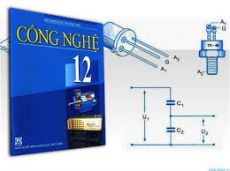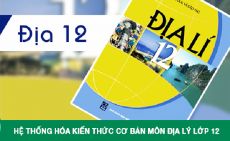Read the following passage and mark the letter A, B, C, or D on your answer sheet to indicate the correct answer to each of the questions from 36 to 42.
Newspaper publishers in the United States have long been enthusiastic users and distributors of weather maps. Although some newspapers that had carried the United States Weather Bureau's national weather map in 1912 dropped it once the novelty had passed, many continued to print the daily weather chart provided by their local forecasting office. In the 1930's, when interest in aviation and progress in air-mass analysis made weather patterns more newsworthy, additional newspapers started or resumed the daily weather map. In 1935, The Associated Press (AP) news service inaugurated its WirePhoto network and offered subscribing newspapers morning and afternoon weather maps redrafted by the AP's Washington, B.C., office from charts provided by the government agency. Another news service, United Press International (UPI), developed a competing photowire network and also provided timely weather maps for both morning and afternoon newspapers. After the United States government launched a series of weather satellites in 1966, both the AP and UPI offered cloud-cover photos obtained from the Weather Bureau.
In the late 1970’s and early 1980's, the weather map became an essential ingredient in the redesign of the American newspaper. News publishers, threatened by increased competition from television for readers' attention, sought to package the news more conveniently and attractively. In 1982, many publishers felt threatened by the new USA Today, a national daily newspaper that used a page-wide full-color weather map as its key design element. That the weather map in USA today did not include information about weather fronts and pressures attests to the largely symbolic role it played. Nonetheless, competing local and metropolitan newspapers responded in a variety of ways. Most substituted full-color temperature maps for the standard weather maps, while others dropped the comparatively drab satellite photos or added regional forecast maps with pictorial symbols to indicate rainy, snowy, cloudy, or clear conditions. A few newspapers, notably The New York Times, adopted a highly informative yet less visually prominent weather map that was specially designed to explain an important recent or imminent weather event. Ironically, a newspaper's richest, most instructive weather maps often are comparatively small and inconspicuous
Câu 36 : What does the passage mainly discuss?
Suy nghĩ và trả lời câu hỏi trước khi xem đáp án
Lời giải:
Báo saiĐáp án B
Bài đọc chủ yếu thảo luận về điều gì?
A. Sự khác nhau giữa dự báo thời tiết của chính phủ và báo chí ở nước Mỹ
B. Lịch sử của việc xuất bản bản đồ thời tiết trong ngành báo chí Mỹ
C. Một sự so sánh giữa bản tin thời tiết của quốc gia và vùng miền ở nước Mỹ
D. Thông tin hình hành nền tảng cho dự báo thời tiết ở nước Mỹ
Thông tin trong bài: "Although some newspapers that had carried the United States Weather Bureau's national weather map in 1912 dropped it once the novelty had passed, many continued to print the daily weather chart provided by their local forecasting office." (Mặc dù một vài tờ báo mà in bản đồ thời tiết quốc gia của cục thời tiết Mỹ vào năm 1912 đã bỏ nó một khi nó không còn gì mới lạ thì nhiều hãng vẫn tiếp tục in bản đồ thời tiết do cơ quan dự báo thời tiết địa phương của họ cung cấp.)
- "In 1982, many publishers felt threatened by the new USA Today, a national daily newspaper that used a page-wide full-color weather map as its key design element." (Vào năm 1982, nhiều nhà xuất bản đã cảm thấy mối đe dọa từ USA Today - tờ báo hàng ngày của quốc gia mà sử dụng một loại bản đồ thời tiết rộng 1 trang giấy với đầy đủ các màu như là yếu tố chính trong thiết kế của họ.)
Câu 37 : The word "resumed" in the passage is closest in meaning to_____________
Suy nghĩ và trả lời câu hỏi trước khi xem đáp án
Lời giải:
Báo saiĐáp án A
Từ "resumed" trong bài đọc gần nghĩa nhất với từ_______________.
A. bắt đầu lại B. giữ lại, ngăn lại
C. nghĩ kĩ, cân nhắc cẩn thận D. đề cập đến, nhắc đến
"In the 1930's, when interest in aviation and progress in air-mass analysis made weather patterns more newsworthy, additional newspapers started or resumed the daily weather map." (Vào những năm 1930, khi mối quan tâm đến lĩnh vực hàng không và tiến bộ trong việc phân tích khối không khí đã khiến các kiểu thời tiết đáng đăng báo hơn, có thêm một số tờ báo đã bắt đầu hoặc bắt đầu lại việc in bản đồ thời tiết hàng ngày.)
Do đó: resumed ~ began again
Câu 38 : According to the passage, one important reason why newspapers printed daily weather maps during the first half of the twentieth century was_____________.
Suy nghĩ và trả lời câu hỏi trước khi xem đáp án
Lời giải:
Báo saiĐáp án B
Theo bài đọc, một lý do quan trọng cho việc báo chí in bản đồ thời tiết hàng ngày suốt nửa đầu thế kỉ 20 là________________.
A. sự tiến bộ trong công nghệ in B. mối quan tâm lớn đến vận tải hàng không
C. sự thay đổi về điều kiện không khí D. sự cải thiện về các kĩ thuật dự báo thời tiết
Thông tin trong bài: "In the 1930's, when interest in aviation and progress in air-mass analysis made weather patterns more newsworthy, additional newspapers started or resumed the daily weather map." (Vào những năm 1930, khi mối quan tâm đến lĩnh vực hàng không và tiến bộ trong việc phân tích khối không khí đã khiến các kiểu thời tiết đáng đăng báo hơn, có thêm một số tờ báo đã bắt đầu hoặc bắt đầu lại việc in bản đồ thời tiết hàng ngày.)
Câu 39 : The phrase "attests to" in the passage is closest in meaning to_____________.
Suy nghĩ và trả lời câu hỏi trước khi xem đáp án
Lời giải:
Báo saiĐáp án D
Cụm từ "attests to" trong bài đọc gần nghĩa nhất với___________
A. đền bù cho B. kết hợp với
C. can thiệp, quấy rầy D. làm chứng, chứng tỏ
"That the weather map in USA today did not include information about weather fronts and pressures attests to the largely symbolic role it played.” (Việc bản đồ thời tiết của tờ USA today không bao gồm thông tin về các phương diện thời tiết và áp suất đã chứng tỏ vai trò mang tính tượng trưng to lớn mà tờ báo này giữ.)
Do đó: attests to ~ gives evidence of
Câu 40 : The word "others” in the passage refers to_____________
Suy nghĩ và trả lời câu hỏi trước khi xem đáp án
Lời giải:
Báo saiĐáp án A
Từ "others" trong bài đọc đề cập đến_______________.
A. tờ báo B. cách thức
C. bản đồ nhiệt độ D. bản đồ thời tiết
"Nonetheless, competing local and metropolitan newspapers responded in a variety of ways. Most substituted full-color temperature maps for the standard weather maps, while others dropped the comparatively drab satellite photos or added regional forecast maps with pictorial symbols to indicate rainy, snowy, cloudy, or clear conditions" (Tuy nhiên, báo địa phương và đô thị cạnh tranh đã phản ứng lại theo nhiều cách khác nhau. Hầu hết đều thay thế các bản đồ thời tiết bình thường bằng bản đồ nhiệt độ đầy đủ màu sắc trong khi các báo khác bỏ những bức ảnh chụp từ vệ tinh tương đối buồn tẻ hoặc in thêm bản đồ dự báo khu vực với các biểu tượng hình ảnh để chỉ ra là mưa, tuyết, mây hay quang đãng)
Do đó: others = newspapers
Câu 41 : In contrast to the weather maps of USA Today, weather maps in The New York Times tended to be_____________.
Suy nghĩ và trả lời câu hỏi trước khi xem đáp án
Lời giải:
Báo saiĐáp án D
Trái với bản đồ thời tiết của tờ USA Today thì bản đồ thời tiết ở tờ New York Times có khuynh hướng_______________.
A. in bằng màu lá B. được bao gồm vì lý do tượng trưng
C. dễ hiểu bởi độc giả D. đầy đủ thông tin chi tiết
Thông tin trong bài: "A few newspapers, notably The New York Times, adopted a highly informative yet less visually prominent weather map that was specially designed to explain an important recent or imminent weather event." (Một vài tờ báo, nổi bật là tờ New York Times, đã đưa ra bản đồ thời tiết mang tính thông tin cao nhưng kém bắt mắt hơn, được thiết kế đặc biệt đế giải thích một sự kiện thời tiết quan trọng gần đằy hoặc sắp xảy ra.)
Câu 42 : The author uses the term "Ironically” in the passage to indicate that a weather map's appearance_____________.
Suy nghĩ và trả lời câu hỏi trước khi xem đáp án
Lời giải:
Báo saiĐáp án B
Tác giả sử dụng thuật ngữ "Ironically" trong bài đọc để chỉ ra rằng sự xuất hiện của bản đồ thời tiết______________.
A. không quan trọng đối với các nhà xuất bản báo
B. không luôn luôn chỉ ra bao nhiêu thông tin mà tờ báo đó cung cấp
C. phản ánh việc tờ báo có thể cung cấp nhiều thông tin như thế nào
D. thường có thể cải thiện việc bán báo
"A few newspapers, notably The New York Times, adopted a highly informative yet less visually prominent weather map that was specially designed to explain an important recent or imminent weather event. Ironically, a newspaper's richest, most instructive weather maps often are comparatively small and inconspicuous. (Một vài tờ báo, nổi bật là tờ New York Times, đã đưa ra bản đồ thời tiết mang tính thông tin cao nhưng kém bắt mắt hơn, được thiết kế đặc biệt để giải thích một sự kiện thời tiết quan trọng gần đây hoặc sắp xảy ra. Trớ trêu thay, bản đồ thời tiết cung cấp nhiều thông tin nhất của các tờ báo thường tương đối nhỏ và không đáng chú ý.)
Đề thi thử THPT QG năm 2021 môn Tiếng Anh
Trường THPT Đồng Khởi Lần 2












